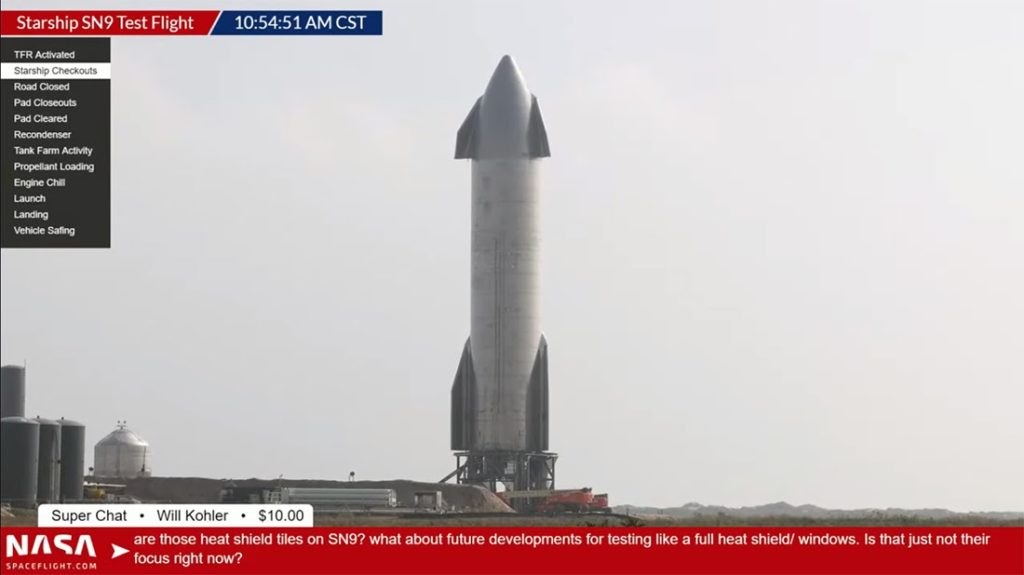
SCREENSHOTS TAKEN BY ROXANNA MIRANDA FROM THE JAN. 25 NASA SPACE FLIGHT WEBSITE LIVESTREAM
Alejandra Yañez | THE RIDER
Windy conditions scrapped a scheduled flight of Starship SN9 prototype Thursday and a second attempt today, SpaceX’s CEO said on Twitter.
Starship SN9 was scheduled to take flight between 8 a.m. and 6 p.m. last Thursday, Elon Musk tweeted Tuesday morning.
The flight test was originally scheduled for Jan. 25 but was delayed due to wind conditions.
According to Cameron County Judge Eddie Treviño Jr.’s order to close State Highway 4 and Boca Chica Beach, SpaceX had until 6 p.m. Thursday to get SN9 in the air. There was also an alternative launch scheduled between 8 a.m. and 2 p.m. today, but this was also scrubbed due to weather conditions.
The prototype is expected to fly no earlier than Monday, according to SpaceX.
SpaceX fans took to Twitter to let the SpaceX CEO know they were awaiting the launch.
“Waiting for FAA review …,” Musk replied to a SpaceX enthusiast at 3 p.m. Tuesday who posted that he was waiting for the hop.
SN9 is expected to have a similar hop to its predecessor, SN8, which took flight Dec. 9, leaving many Rio Grande Valley spectators in awe.
As previously reported by The Rider, SpaceX described the launch as follows, “Starship serial number 8 (SN8) lifted off from our Cameron County launchpad and successfully ascended, transitioned propellant, and performed its landing flip maneuver with precise flap control to reach its landing point. Low pressure in the fuel header tank during the landing burn led to high touchdown velocity resulting in a hard (and exciting!) landing.”
While the flight of SN8 delighted spectators, its landing, as described by SpaceX, was rough and resulted in an explosion. SN9 is expected to have a much smoother landing but follow the same 12.5 kilometer hop.
The SN9 prototype will be equipped with the same three Raptor engines as its predecessor, as well as a nose cone for aerodynamics and sported body flaps on its side to increase stability during flight.
SN9 is a small piece of the puzzle in Musk’s plan for interplanetary exploration with Starship.
The SpaceX CEO plans to create a 165-foot-tall Starship vehicle that will eventually launch from Earth attached to a giant rocket, Super Heavy.
Together, the Starship vehicle and Super Heavy will be 394 feet tall.
SpaceX’s Starship spacecraft and Super Heavy rocket, which together are referred to as Starship, will form a fully reusable transportation system designed to carry both crew and cargo to orbit the Earth, Moon and Mars, according to the SpaceX website.
“Starship will be the world’s most powerful launch vehicle ever developed, with the ability to carry in excess of 100 metric tonnes to Earth orbit,” according to SpaceX.com.
In other SpaceX-related news, the company successfully conducted a pressure test on SN7.2 Tuesday morning.
Musk confirmed the success by tweeting a reply to a photo of the prototype, “Passed initial pressure test,” at 3 p.m. Tuesday.





